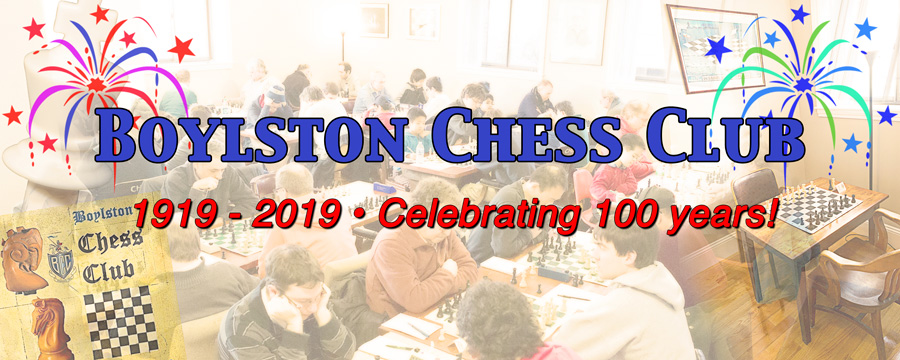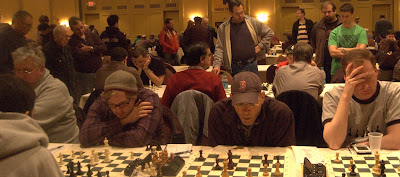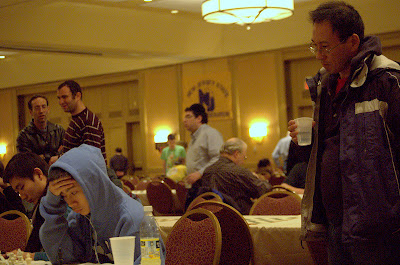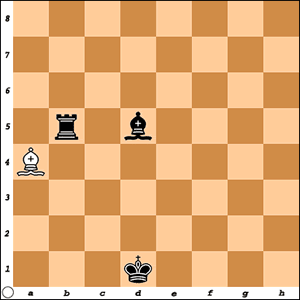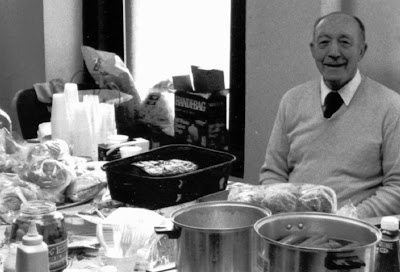[btw, if you have checked it out lately, the venerable TNS in recent months has grown larger and stronger than it has been in years.]
If you putter, your game will sputter.
Franke: “
This is a game I’m quite proud of, even though I came away from it with a half point fewer than I should have.
With a USCF rating of 1984 and a recent peak at 2037, Ted is the strongest opponent by far whom I’ve ever achieved a draw against, and outcome aside, this is simply one of my best-played games.
I’ve only recently returned to tournament chess after abandoning it while in elementary school, so I’m still working my way up from my old rating of 778.
Although I’m therefore much stronger than my published rating, I feel that I typically play at about a 1650 level, which is quite a long way from Expert and makes this game a remarkable result.
I do feel like I’ve improved enough recently that I’m starting to discover my style, which I’d characterize as ‘tactical but conservative.’
I can literally calculate all day (even at the longest time controls, the clock is my nemesis), but I’ll always chose a solid positional move over a possible brilliancy whose soundness I’m not confident in, and I avoid getting into positions that are out of my depth, no matter if they’re out of my opponent’s depth as well.
I think all of these observations show through in this game.”
Ted Cross (1984) – Daniel Franke (1110), Somerville 2012
Read the detailed analysis and discussion of this game at:
with comments like these:
It’s clear that Franke is tactically astute. If he can add a bit more positional energy to his ability to calculate, and if he beats back his fear of enemy threats, he might find himself on a regular diet of baked/fried/boiled Expert (or Expert tartar, for those that like their meat fresh)....
Franke: “With white’s light-squared bishop gone, my ...f6 sin is forgiven.”
Hey guy! I haven’t forgiven it! But I don’t look at your …f6 as just a bad move. Rather, I look at it as a misunderstanding about how to play chess. Meekly defending against perceived threats will ensure you never become the player you want to be. Refusing to bow to your opponent’s wishes will (faster than you imagine) change the way you look at chess, and propel you far ahead of the masses.
...
White was clearly having an off day. Or, as is common for players of all levels, he just wasn’t in tune with the nuts and bolts of this type of position. White needs to generate some activity, he needs targets (and hitting d6 by itself isn’t going to get the job done), and he needs to get his Rooks into the action. Thus, 22.a3 bxa3 23.Rxa3 Nc7 24.f3 Qxb2 25.Rb3 Qe5 26.Rb7 Rec8 27.Bf2 (heading for g3) and at least we’re having a bit of fun! That’s what active piece are – movable bundles of quivering fun. (None of that was forced, of course, but it does give you an inkling of what I’m trying to achieve.)
...
At this point Black needs to take a long look at the position and try and find the simplest, safest, and most deadly way to end the game. No need to be creative – keep it simple while simultaneously leading White to the slaughterhouse:
...
Now that you allowed him to block the pawn with his King, you need to have a deep think and find a way to follow the old, “simplest, safest, and most deadly way to end the game” formula. The fact is that in endgames, just puttering about will often allow your opponent to creep back into the game. You really need to hunker down at this final stage and look for the most incisive way to take home the point.
37...Rcxc7??
Yes, this is indeed winning. But you get two question marks because taking on c7 is a lazy decision that also creates a very bad mindset: you thought the game would win itself after this trade.
...
Franke: “Right after my opponent accepted my draw offer, I said to him, ‘I am probably going to shoot myself. I am going to get home, open up Dvoretsky’s Endgame Manual, take one look at it, and then I am going to shoot myself in the head.’ IM Marc Esserman overhead this and looked at the position. After a single glance he said, ‘This is won.’ Then he sat down for five minutes pondering how he was going to back up that assertion. This made me feel a lot better!” 1/2-1/2._________
